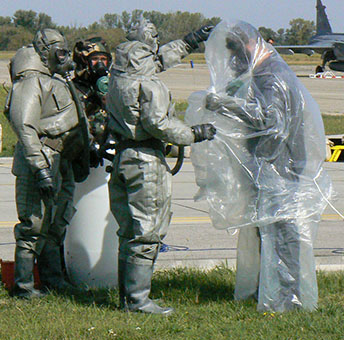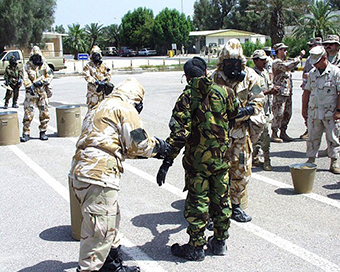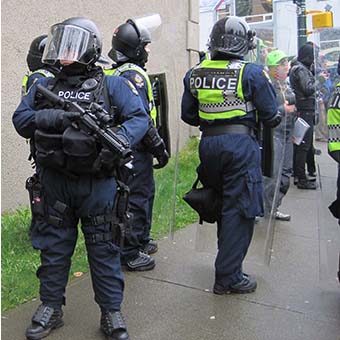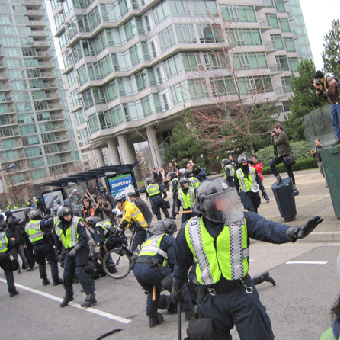
Interoperability Among First Responders and Health Workers
Color-Coded Identification System for Medical Workers
The U.S. Dark Winter exercise in 2001, "Dark Winter tabletop Bioterrorism exercise" held at Andrews Air Force Base, highlighted the impact on pandemics and challenges health care systems and hospital facilities would encounter. These studies highlighted numerous significant gaps, including the connectivity between first responders and other emergency responders and hospital workers when they respond to pandemics, biological and chemical incidents.
2001, the Rand Corporation studies and the U.S. Dark Winter exercise further highlighted the importance of partnership among first responders and public health workers, also recognized the impact on hospital facilities and challenges hospital workers face due to lack of personal identification. The National Library of Medicine An Innovation in Partnership Among First Responders and Public Health:
Who's who
The health care preparedness and response plan is the second phase of the CBRNE Triangle Project, which was started in 2018 and will be fully implemented in 2025. The purpose of this frontline health care worker's identification system is to individually recognize frontline workers as "Who’s Who”, such as physicians, nurses, food workers, office staff and janitorial staff, etc.
The health care workers' preparedness and response plan developed is about minimizing the chaotic environments when hospital facilities get inundated with an unexpected flood of casualties.
Also, to control the spread of viruses during the casualties handover process, the first responders (External Emergency Forces), who are transporting patients into hospitals, and the hospital emergency workers (Internal Emergency Forces) who are receiving casualties. This identification system also is designed to control and mitigate workers in the hospital facilities who are vulnerable to viruses to move away from professional staff such as physicians and nurses who are essential in saving lives.
The Color-Coded identification system for health care workers is developed as an arm band or wrist band that each color band assigned for a specific health care worker is based on their profession. The identification system comprises a unique design and a color.
The key feature of this identification system is that physicians, nurses, and other workers have the ability to distinctively identify who's who in the hospital vicinity. Also, the ability to quickly and visually identify the response team members and their specific duties and responsibilities. The identification system is designed with specific colors, numbers, and shapes of patches that can be worn over existing garments.
View our mission
Color-Coded Identification System



.jpg)
.jpg)
.jpg)











